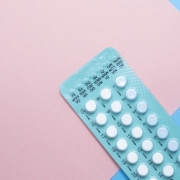Breast cancer is a type of cancer that begins in the tissue of the breast. There are two main types of breast cancer, including ductal carcinoma and lobular carcinoma. The majority of breast cancer is ductal carcinoma. Sometimes breast cancer can begin in other regions of the breast, but primarily it begins in the ducts or the lobules. Invasive breast cancer means that the cancer has spread from the milk duct or lobule to other breast tissue. Non-invasive breast cancer means that cancer is called “in situ” and has not yet spread. Read below to learn about symptoms of invasive breast cancer.
Symptoms
Early stage breast cancer usually does not have any symptoms. For this very reason it is very important for you to complete regular breast examinations, which might facilitate the discovery of breast cancer earlier than if you fail to do breast examinations. As breast cancer grows and advances in stages, there might be a breast lump in your breast or armpit that is hard, with uneven edges, which does not hurt. Your breast or nipple might change color, size, shape, or feel. Your breast may excrete fluid, such as blood or pus. Bone pain, breast pain, skin ulcers, swelling of one arm, and weight loss are also indications that breast cancer may be present.
Treatment
If you have been diagnosed with breast cancer there are numerous treatments that are available to you. However, treatment is dependent on the type and stage of cancer, whether the cancer is sensitive to certain hormones, and whether the cancer overproduces HER2/neu, a particular gene. Cancer treatment may include chemotherapy, radiation therapy, hormonal therapy, and/or targeted therapy. The type of treatment that is most appropriate will be decided upon by you and a team of doctors and surgeons who will work with you.
Hair Loss Treatment Options
If you’re currently undergoing chemotherapy treatment for cancer or are preparing to undergo treatment, inquire about the likelihood of hair loss. Even though hair loss might seem like the last thing to worry about right now, maintaining some aspect of your sense of self is possible. Purchasing a hair system that resembles your exact natural head of hair is a helpful preventative measure that could provide you with some comfort during difficult times. If you’re not ready to think that far ahead, it is possible to attend a consultation with a hair loss expert after you have begun to lose your hair.
Preventing and treating breast cancer requires commitment not only from you but also from your friends, family, and doctor. If you suspect that you might have breast cancer, make an appointment with your doctor and bring a friend or partner with you. Attending a doctor’s appointment, especially regarding a serious medical issue, can be very stressful. Write down your symptoms and a set of questions that you have for your doctor. If you discover that chemotherapy is in your future, schedule an appointment with a hair loss consultant prior to your first chemotherapy treatment.
References


 Women always want to have gorgeous hair and will just about anything to achieve it, including trying all the latest hair products or gadgets to get the look you want. Flat irons, hair product chemicals and harsh hair brush bristles are doing real damage to your hair. As women get older, their hair goes through changes and hair thinning is one of them especially has they enter their 50’s and 60’s. Hair experts believe this happen because of hormonal changes, but haven’t determined the exact cause of thinning hair as we age.
Women always want to have gorgeous hair and will just about anything to achieve it, including trying all the latest hair products or gadgets to get the look you want. Flat irons, hair product chemicals and harsh hair brush bristles are doing real damage to your hair. As women get older, their hair goes through changes and hair thinning is one of them especially has they enter their 50’s and 60’s. Hair experts believe this happen because of hormonal changes, but haven’t determined the exact cause of thinning hair as we age.